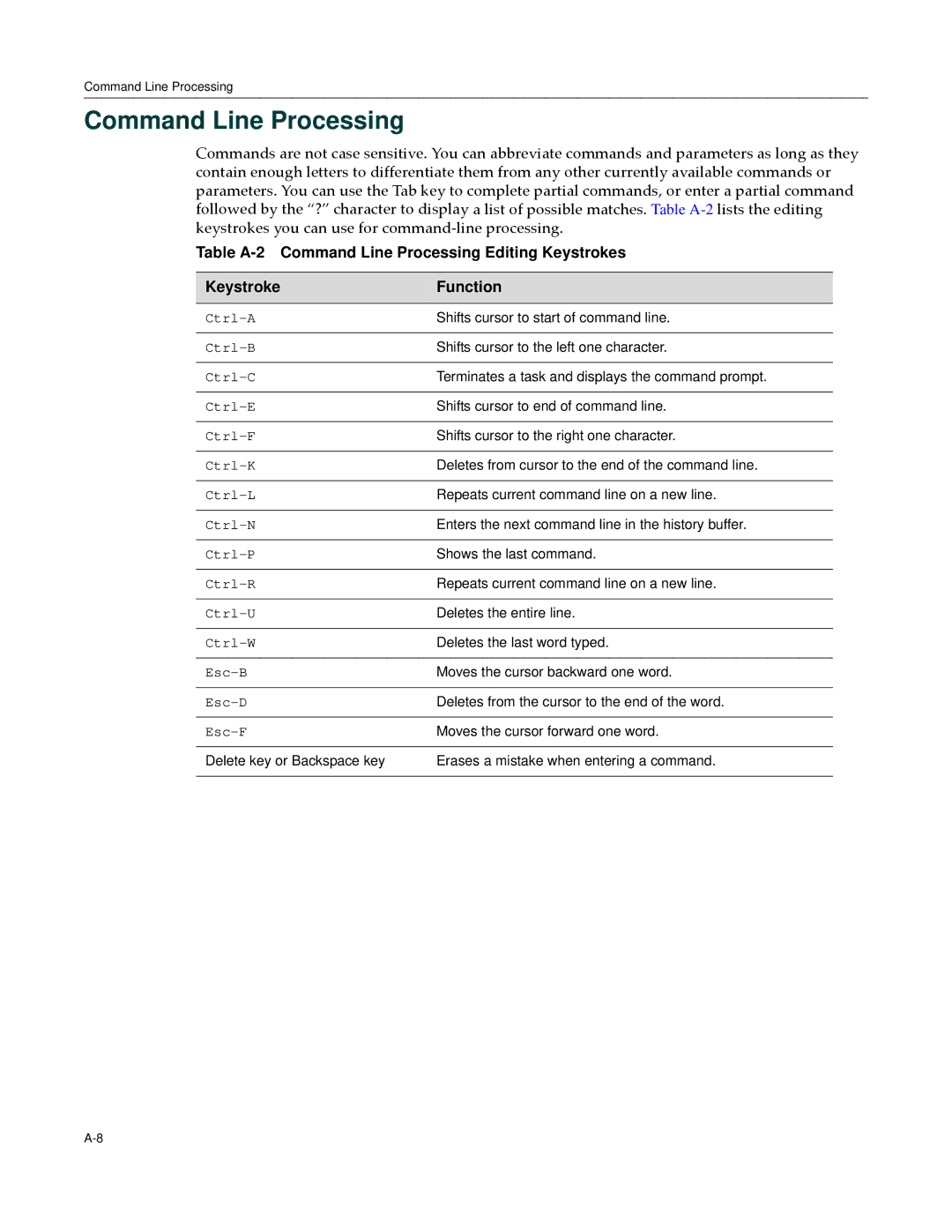Command Line Processing
Command Line Processing
Commands are not case sensitive. You can abbreviate commands and parameters as long as they contain enough letters to differentiate them from any other currently available commands or parameters. You can use the Tab key to complete partial commands, or enter a partial command followed by the “?” character to display a list of possible matches. Table
Table
Keystroke | Function |
|
|
Shifts cursor to start of command line. | |
Shifts cursor to the left one character. | |
Terminates a task and displays the command prompt. | |
Shifts cursor to end of command line. | |
Shifts cursor to the right one character. | |
Deletes from cursor to the end of the command line. | |
Repeats current command line on a new line. | |
Enters the next command line in the history buffer. | |
Shows the last command. | |
Repeats current command line on a new line. | |
Deletes the entire line. | |
Deletes the last word typed. | |
Moves the cursor backward one word. | |
Deletes from the cursor to the end of the word. | |
| Moves the cursor forward one word. |
Delete key or Backspace key | Erases a mistake when entering a command. |
|
|
